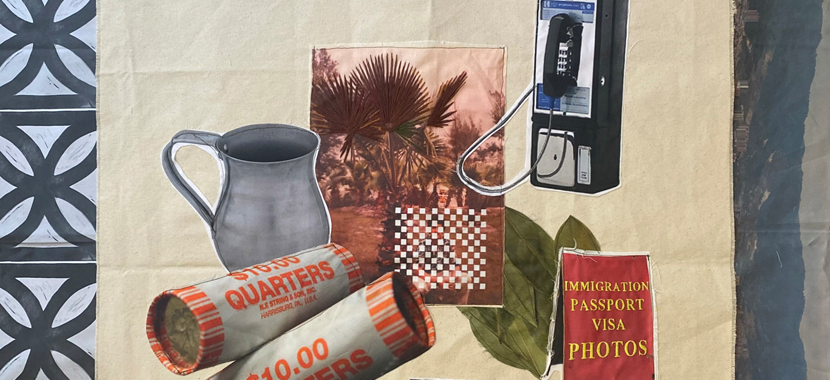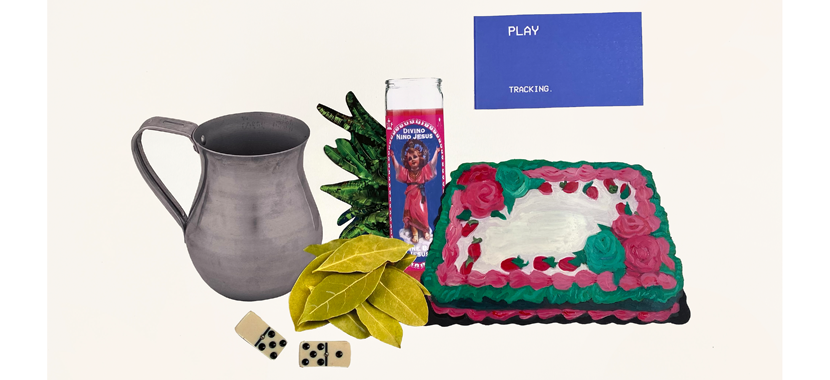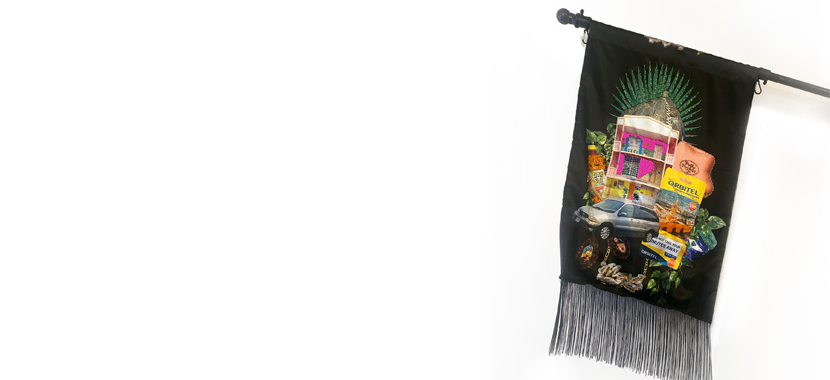
Conversations | Paola de la Calle
Colombian-American artist Paola de la Calle on cultural elasticity, the idea of ‘home,’ and Hispanic Heritage Month.
Hispanic Heritage Month is an opportunity for both necessary recognition and critical discussion, and a time to consider what categories like “Hispanic” or “Latine/x/o/a” mean to different people brought together under a shared identity. To honor this duality, we spoke with Colombian-American artist and 2019 Immigrant Artist Mentoring Program: Oakland alum Paola de la Calle about practice, heritage, and her take on Hispanic Heritage Month.
NYFA: What does Hispanic Heritage Month mean to you?
Paola de la Calle: Eh, at its best, this month (can we stop calling it Hispanic Heritage Month?) celebrates the rich diversity of Latin America and the diaspora and gets artists paid to share their stories. At its worst, it puts us in a box and perpetuates anti-Blackness while adding to the erasure of Black and Indigenous people in Latin America. There’s a lot to unpack, but I highly recommend folks check out the work of Alan Pelaez Lopez and the hashtag they created, #LatinidadisCancelled.

NYFA: Tell us a bit about your parents’ journey to the U.S. and your experience of growing up as a first-generation citizen.
PdlC: I have a difficult time talking about my parents’ journey to the U.S., mostly because I don’t feel it’s my story to tell. While their migration to the U.S. led to my birth, and their citizenship status affected (and continues to affect) how we navigate our day-to-day lives, their individual journeys from Colombia to the United States are stories I’ve only ever heard in pieces. For me, it is the gaps, the ruptures, the historical and political context that reveal themselves in those stories that become points of departure for my work.
Being first-generation meant I had the privilege of being able to travel between Colombia and the United States which created a sense of home in both countries. This sort of “in betweenness” and “bothness” deeply influences my work and how I examine the historical and political relationship between the United States and Colombia through my practice.
On a personal level, it meant that our small apartment always smelled of Colombia and that English wasn’t allowed to be spoken at home. My parents were strict about good grades and church, didn’t understand the concept of sleepovers, and we were always stopping to buy international calling cards at a corner store on our way home.

NYFA: You’ve described your work as concerned with, among other subjects, cultural elasticity and the idea of home. What are some of the ways these concepts manifest in your practice?
PdlC: In terms of how these subjects manifest themselves in the materials I use, this typically means I’m combining digitally-printed fabric, hand sewing techniques, and text to investigate the symbolism within everyday objects I consider “cultural artifacts.” Like a tub of Country Crock Butter or a bottle of Pine Sol. But home, and the people who occupied space in my home growing up, appear everywhere in my work—down to the mediums I’m working with. I was raised by my tías on my mom’s side who migrated to the U.S. and who all did some sort of manualidad (worked with their hands creatively). My earliest memories in the U.S. are of me sitting next to my Tia Tata on the sewing machine learning to sew clothes; at the time she worked making purses at the Coach Factory and made costumes for our school performances. Now, I’m working with textiles using the same techniques she taught me. In Colombia, my earliest memory is sitting beside my Tia Soky at the kitchen table making miniature clay sculptures to give to guests as party favors. Today, I made a series of large coffee beans out of clay for an installation. In a lot of ways, my practice requires me to mine memories, dig through archives, and thread together past and present to examine the relationship between my two homes and, in turn, the relationship I have with each of them.
NYFA: What advice would you offer immigrant artists trying to create installations or other interdisciplinary works in a new country?
PdlC: There’s this idea that artists work in isolation, but I truly believe that building a community is at the root of all successful artmaking. So my advice would be to find other artists and art lovers, go to openings, check out new exhibitions, take art classes, volunteer in spaces you’re interested in engaging with, and sign up for all the newsletters. But most importantly, don’t be afraid to call yourself an artist. And once you’ve done that, pass some opportunities to other artists, share what you’ve learned—there’s enough for all of us.
About Paola de la Calle:
Paola de la Calle (b. 1992) is a Colombian-American interdisciplinary artist whose work examines home, borders, identity, and nostalgia. Her practice is a multidisciplinary exploration that ties together her family’s migration and personal memories, as well as historical and political narratives through the use of textiles, printmaking, and collage. Her work has been exhibited throughout the United States at Crosstown Arts, TN; Nave Gallery, MA; Jay Etkin Gallery, TN; Root Division, CA; Galeria de la Raza, CA; Compound Gallery, CA; and SOMArts, CA. In her recent work, de la Calle unpacks cultural elasticity by combining digitally-printed fabric, hand sewing techniques, and text to investigate the symbolism within everyday objects she considers cultural artifacts.
de la Calle participated in the New York Foundation for the Arts’ Immigrant Artist Mentoring Program in 2019 and the 2020-2021 Artist-in-Residence program at Galeria de la Raza. Her work has been published in Mujerista Co. issues III and IV, The New Farmer’s Almanac, and Graphite Journal. Her studio practice has been featured in Hyperallergic’s “A View from the Easel” column, KQED’s “Rightnowish” podcast, NowThis, and Vogue. She is currently based in San Francisco, CA.
– Interview conducted by Kyle Lopez, Program Associate
This post is part of the ConEdison Immigrant Artist Program Newsletter #141. Subscribe to this free monthly e-mail for artist’s features, opportunities, and events. Learn more about NYFA Immigrant Artist Mentoring Program.